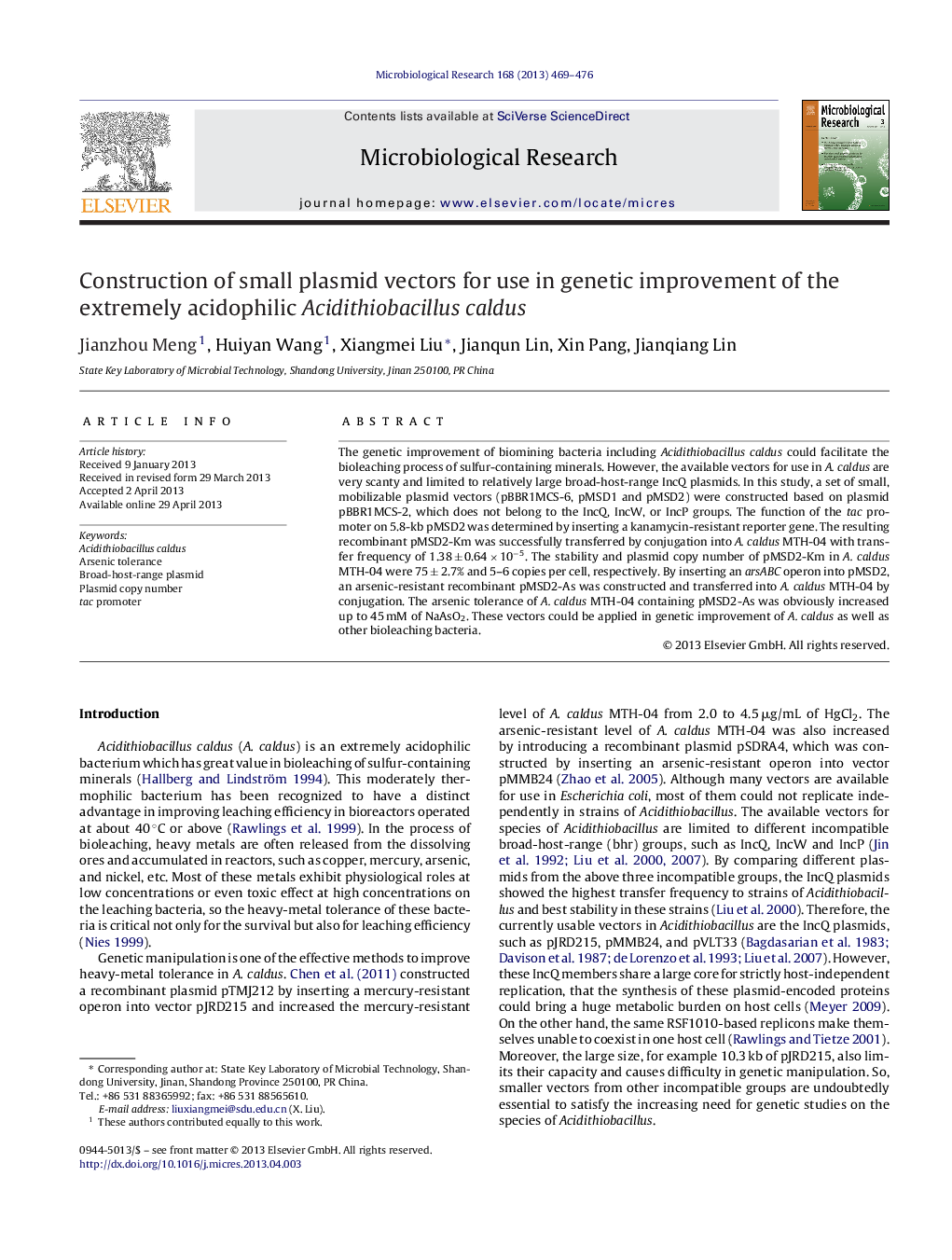| کد مقاله | کد نشریه | سال انتشار | مقاله انگلیسی | نسخه تمام متن |
|---|---|---|---|---|
| 2092207 | 1081774 | 2013 | 8 صفحه PDF | دانلود رایگان |

The genetic improvement of biomining bacteria including Acidithiobacillus caldus could facilitate the bioleaching process of sulfur-containing minerals. However, the available vectors for use in A. caldus are very scanty and limited to relatively large broad-host-range IncQ plasmids. In this study, a set of small, mobilizable plasmid vectors (pBBR1MCS-6, pMSD1 and pMSD2) were constructed based on plasmid pBBR1MCS-2, which does not belong to the IncQ, IncW, or IncP groups. The function of the tac promoter on 5.8-kb pMSD2 was determined by inserting a kanamycin-resistant reporter gene. The resulting recombinant pMSD2-Km was successfully transferred by conjugation into A. caldus MTH-04 with transfer frequency of 1.38 ± 0.64 × 10−5. The stability and plasmid copy number of pMSD2-Km in A. caldus MTH-04 were 75 ± 2.7% and 5–6 copies per cell, respectively. By inserting an arsABC operon into pMSD2, an arsenic-resistant recombinant pMSD2-As was constructed and transferred into A. caldus MTH-04 by conjugation. The arsenic tolerance of A. caldus MTH-04 containing pMSD2-As was obviously increased up to 45 mM of NaAsO2. These vectors could be applied in genetic improvement of A. caldus as well as other bioleaching bacteria.
Journal: Microbiological Research - Volume 168, Issue 8, 1 October 2013, Pages 469–476